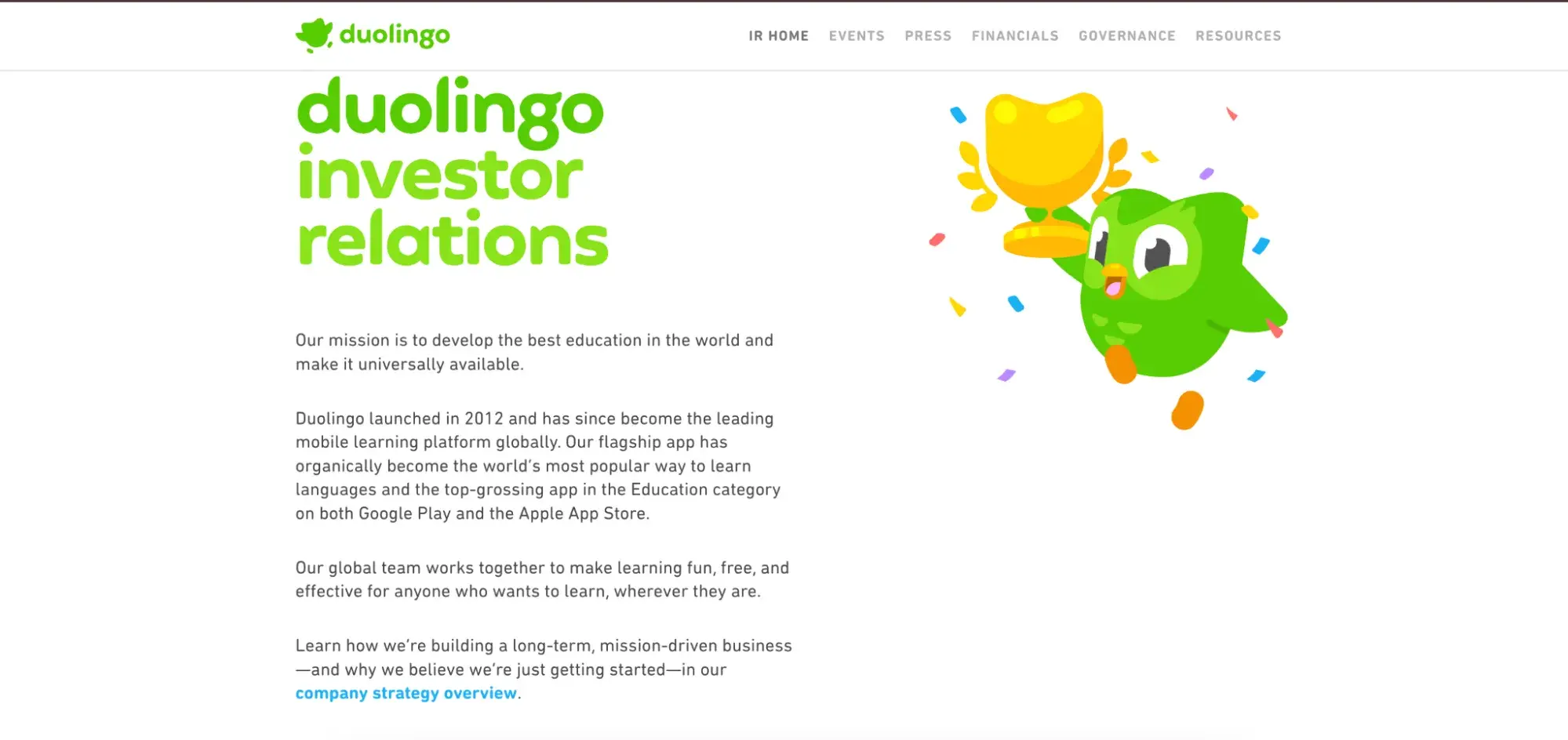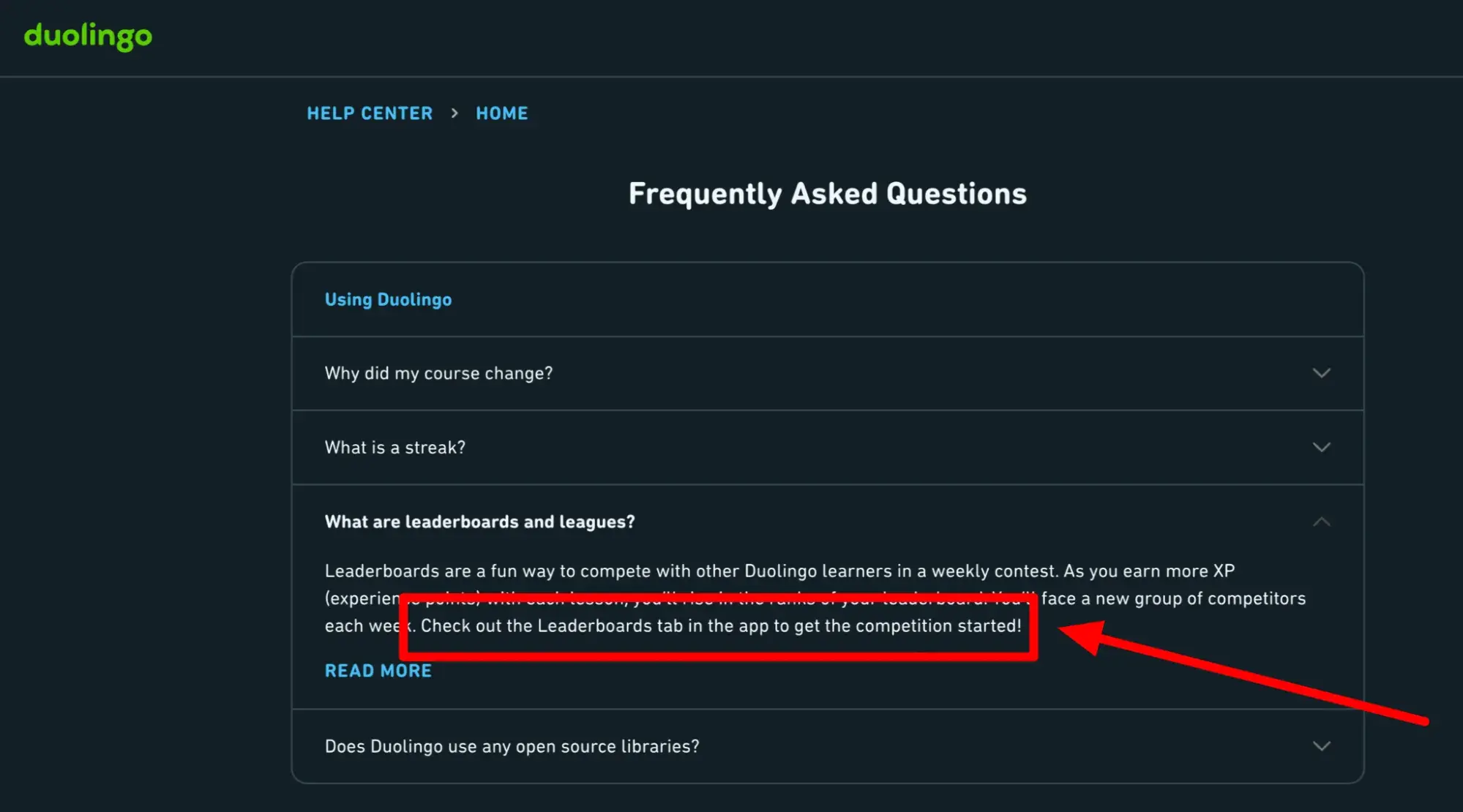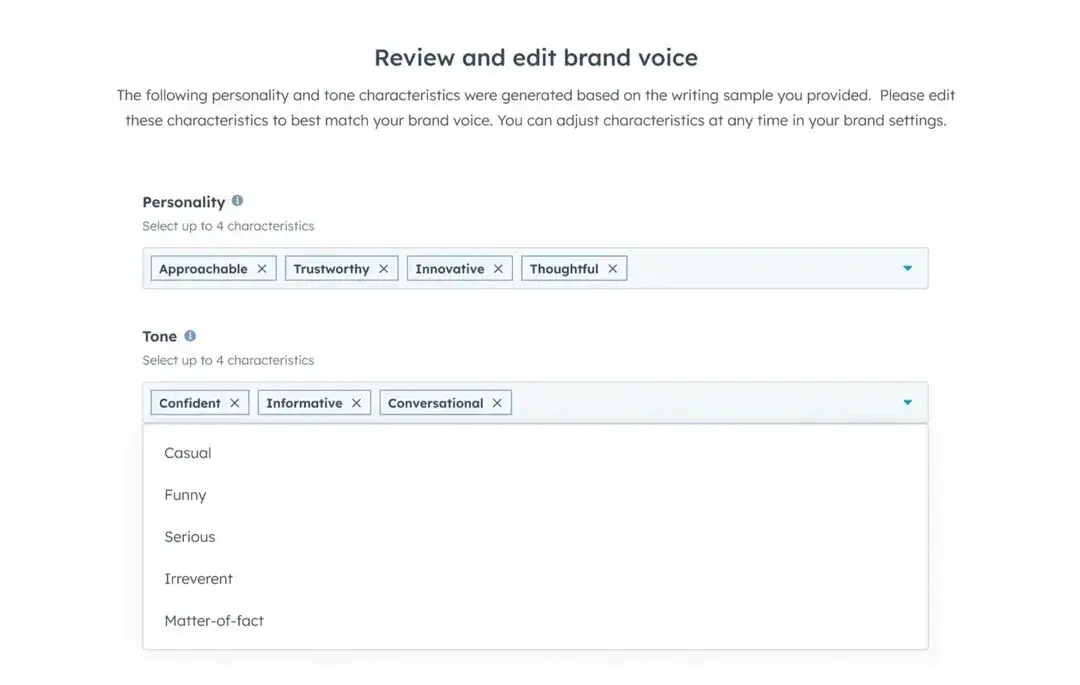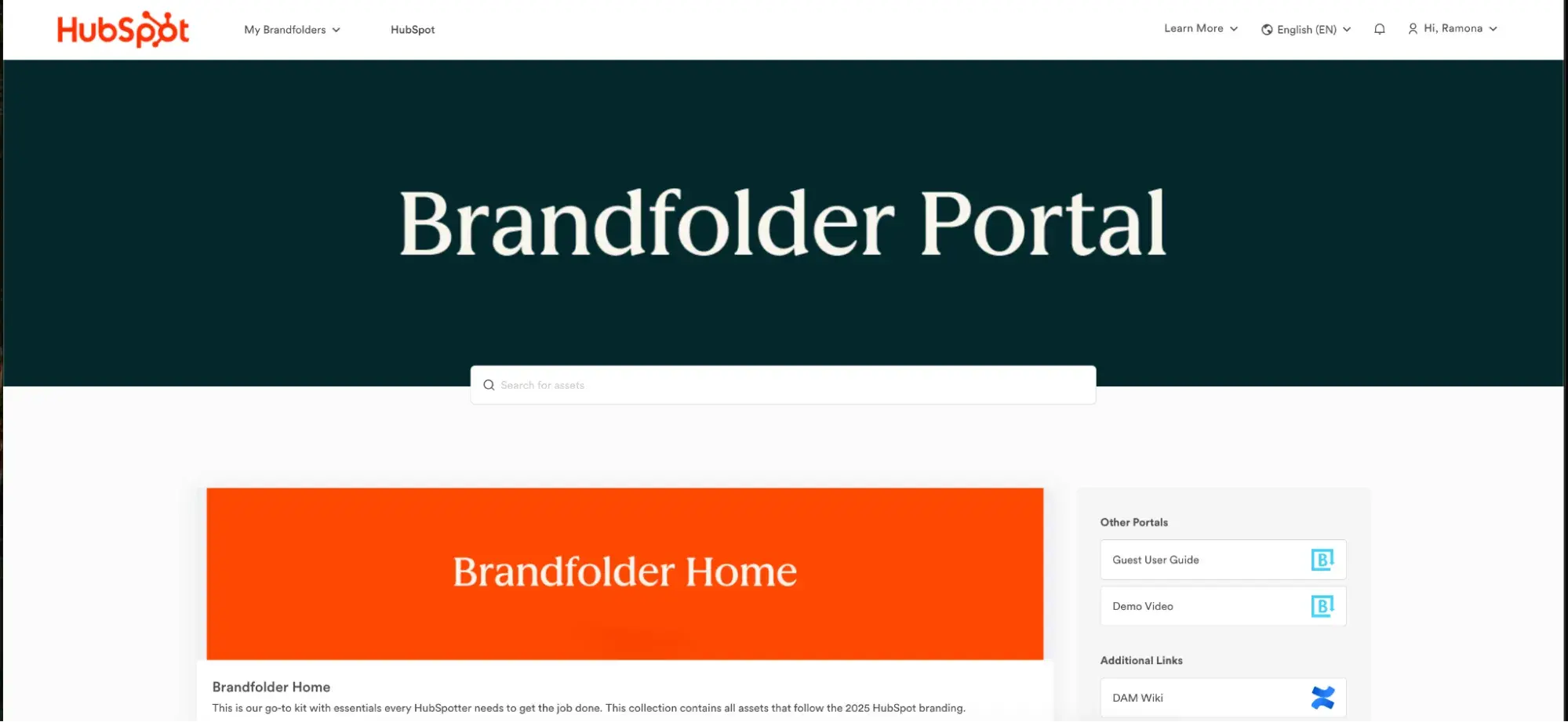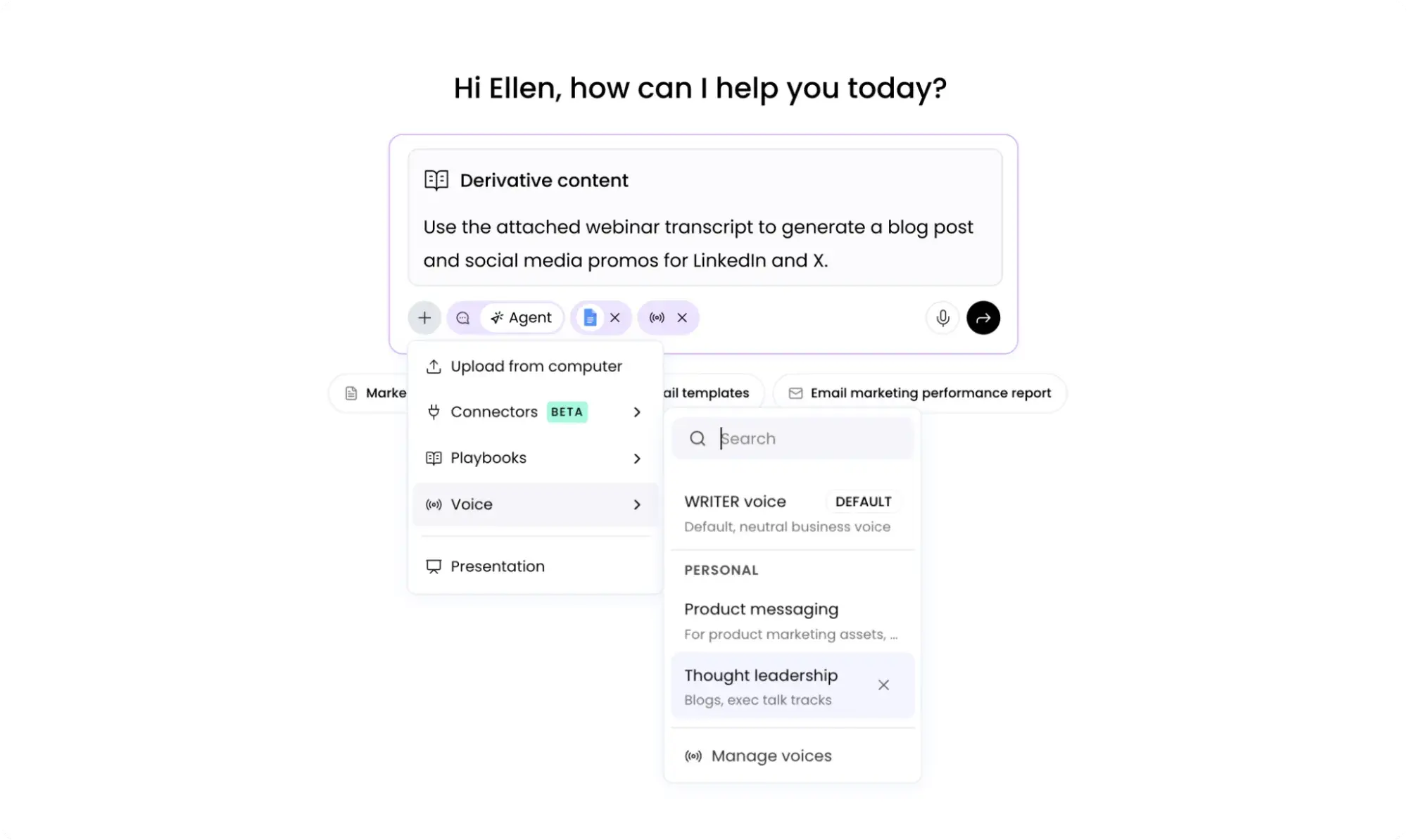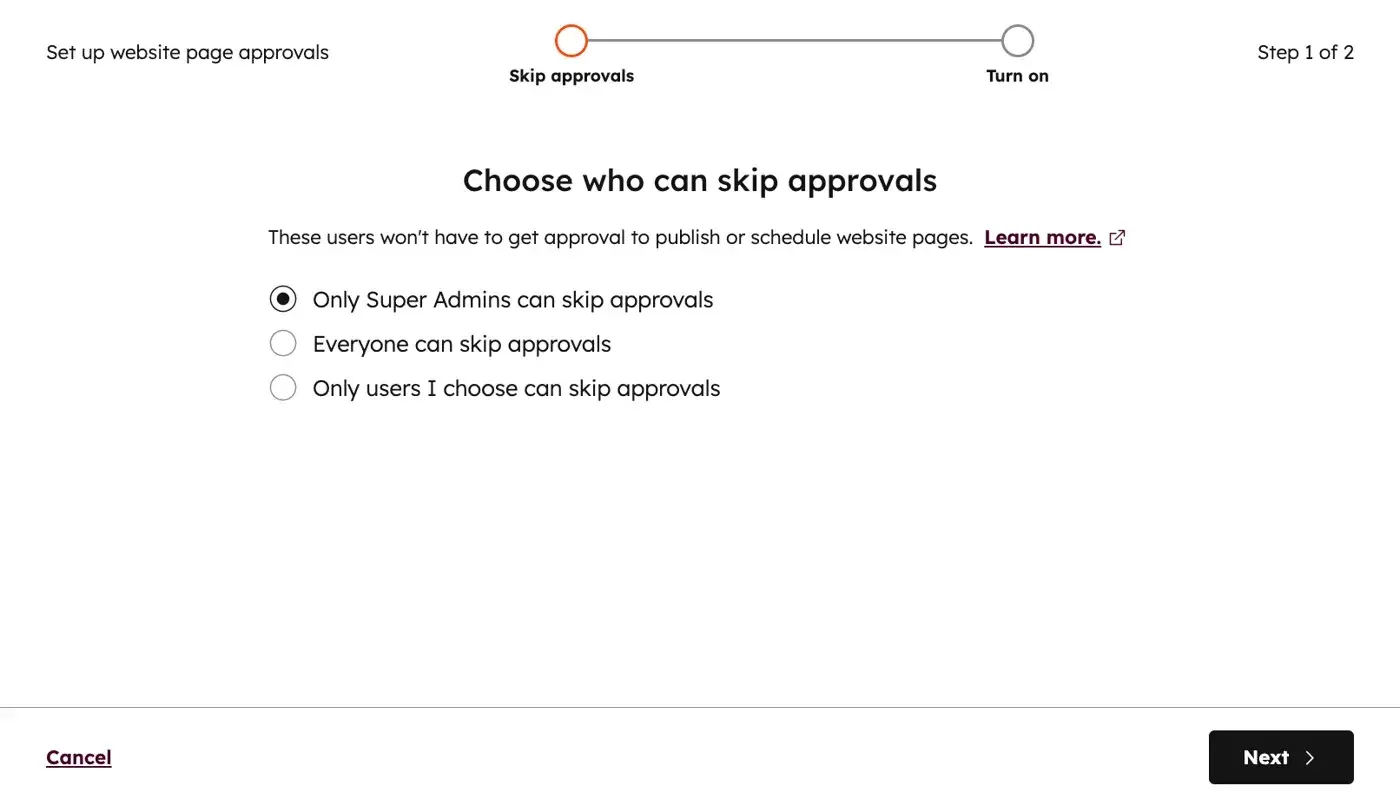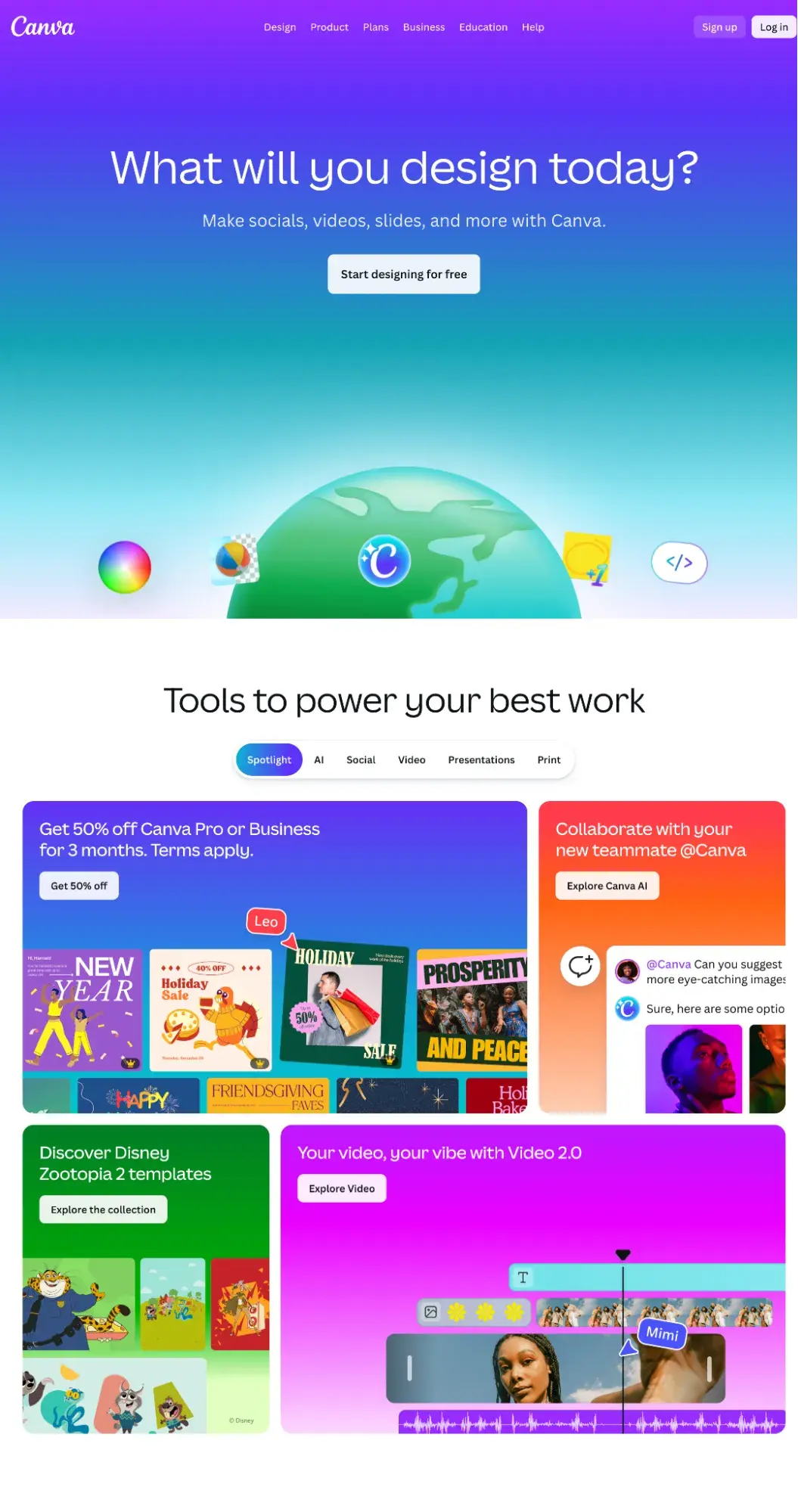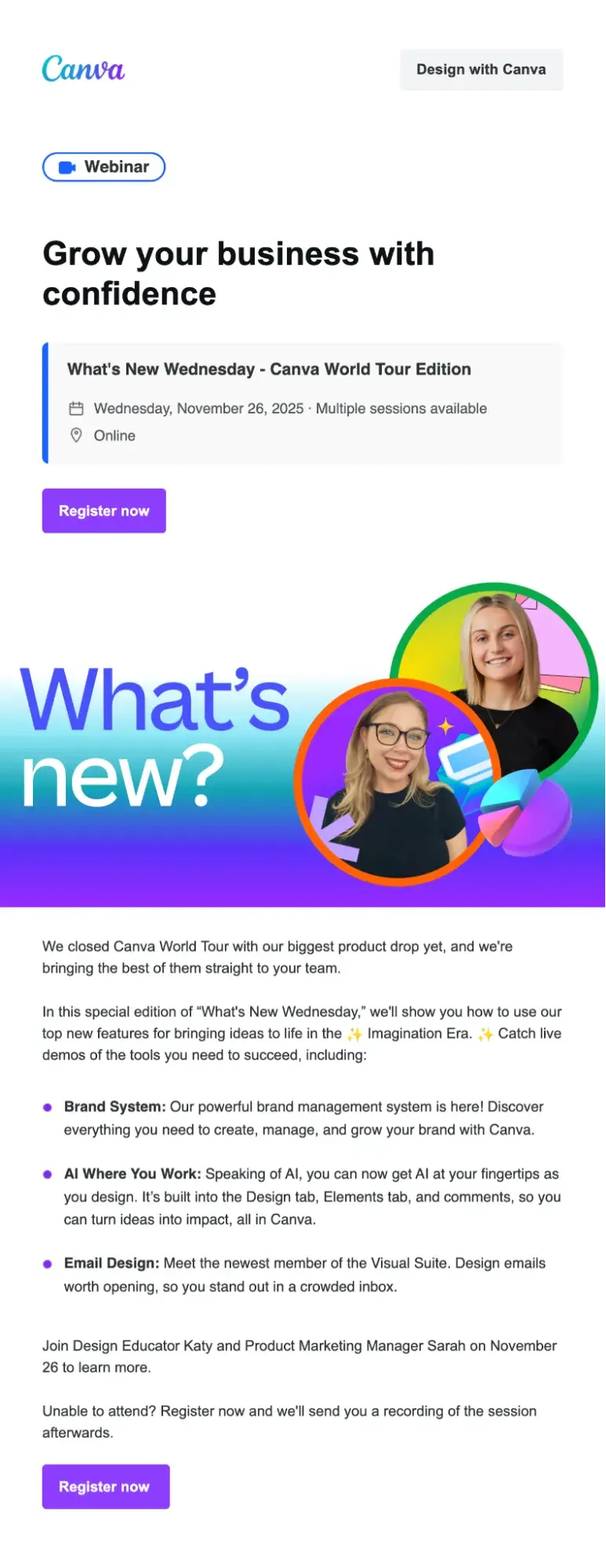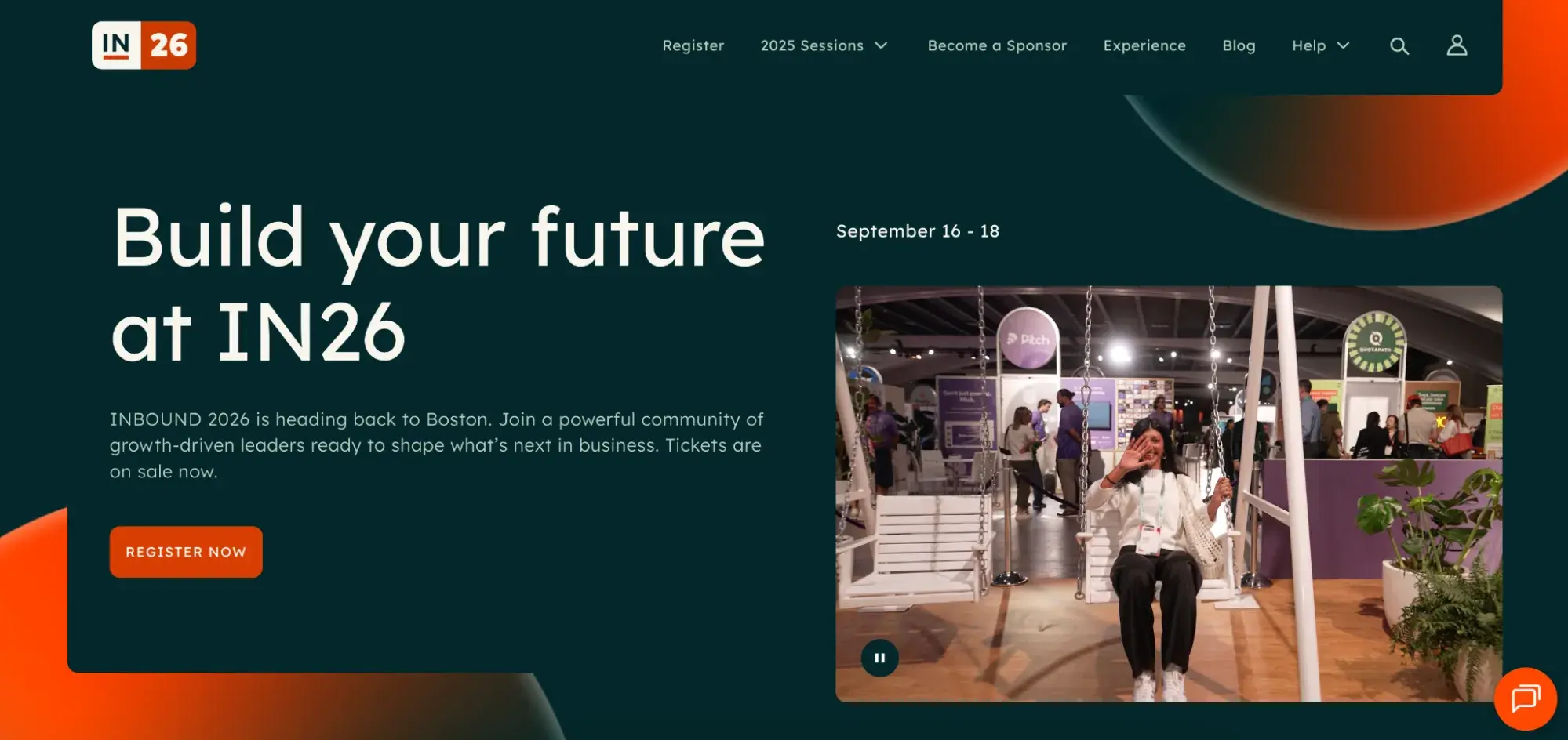When I joined HubSpot, I stepped into a rare position. I had already spent years as a customer, learning how to build systems creatively with the tools I had access to. Then, I joined the company with the responsibility of modernizing a long-standing customer reference system that had served many teams well but was now struggling to meet new expectations, complexity, and scale.
Seeing both sides changed how I approached this work. Advocacy is often misunderstood. It can be seen as simple or administrative because so much of its complexity lives behind the scenes. But once you look closely, you realize it requires nuance, discernment, finesse, and emotional intelligence at every step.
My goal was not to replace any of that. It was to create a system that supported it.
If you have ever tried to build trust at scale, you likely know firsthand how challenging the work can be. So, consider this a look inside what we rebuilt at HubSpot, how we approached it, and how you can apply the same principles without needing an engineer or a separate platform. And speaking as someone who is very much not an engineer — only a marketer armed with a MacBook and grit — if I can build this, you can too.
If there has been one theme throughout this journey, it is that AI is not the threat to fear. Inconsistency is. AI did not remove the human parts of this work. It clarified where they matter most.
The Quiet Work Behind Every Win
Every organization relies on work that is often invisible but deeply impactful:
- The coordinator who sees a potential mismatch before it becomes a problem.
- The specialist who remembers a customer’s context that no system fully captures.
- The rep who adds one extra sentence that changes the quality of a match.
Advocacy teams live here every day. They build credibility, connection, and proof in ways that are easy to underestimate when the process is scattered or opaque. As both a former customer and now a HubSpotter, I saw just how often the work was undervalued, not intentionally but because its complexity was hidden.
The goal of this rebuild was to make that work visible, respected, and supported so that people had the structure they needed to excel.
AI did not replace people. It supported them.
As we redesigned the reference process, one thing became very clear: the system had grown more complicated over time. This wasn’t because the work was flawed. The people who were trying to help were filling gaps manually.
The old process required 18 disconnected steps. After the rebuild, it became a connected sequence of five clear phases.
The most surprising outcome was how well AI paired with human judgment. It did not eliminate the need for nuance or relationship context. It supported it.
- HubSpot Workflows handled predictable routing.
- Slack made communication immediate and visible.
- AI copilots helped validate fit and reduced manual triage.
This gave people more time to focus on the parts only humans can do: storytelling, empathy, nuance, and partnership.
From Stories to Systems and Then to Scale
As the new system came together, it became clear that we were not just building workflows — we were also shaping how trust moves through an organization.
When teams gain transparency into advocacy work, three things reliably happen:
1. Reciprocity increases.
When people can see how their involvement matters, participation grows organically. This was one of the strongest drivers of momentum.
2. Equity expands.
Advocates who had previously been overlooked surfaced naturally through objective criteria.
3. Alignment strengthens.
Sales, Success, and Marketing began operating from shared information rather than assumptions.
This shift was less about tools and more about structure. HubSpot simply gave us the environment to create shared clarity.
Establishing a Single Source of Truth for Trust
Step 1: Establish a data-driven baseline.
One of the most persistent challenges for advocacy teams is demonstrating the impact of their work. ROI, influenced revenue, readiness forecasting, and coverage gaps are difficult to measure when the underlying data model is fragmented or inconsistently maintained.
Before we could optimize workflows or add automation, we needed a data foundation strong enough to support operational and reporting needs at scale.
To address this, we designed a Trust Readiness Model that evaluates:
- Relationship maturity, including tenure, past collaboration, and sentiment patterns.
- Product adoption depth using usage data, feature-level adoption, and cross-portal behaviors.
- Account health through renewal signals, support trends, and lifecycle stage.
- Growth signals such as expansion opportunities, product interest, and account trajectory.
- Willingness to engage captured through outreach responses, past advocacy participation, and customer feedback.
Designing this model was the conceptual part. The real work was operationalizing it inside HubSpot in a way that was both reliable and scalable. This required a full data architecture build that included:
- Custom properties at the contact, company, and deal level, designed with strict naming conventions and data types to avoid future ambiguity.
- Validation rules that prevented incorrect or incomplete data entry.
- Conditional scoring logic that automatically updates readiness based on property changes, usage data, and lifecycle events.
- Workflow logic tied to each fulfillment stage, ensuring that requests are advanced in a consistent and controlled manner.
- Segmentation rules that recalculate advocate readiness and match viability in real-time.
- Priority rules for conflicting values, stale data, and high-risk accounts.
- Dashboards built for different audiences, including ROI reporting for leadership, velocity tracking for operations, and readiness insights for frontline teams.
The impact of this work was immediate. For the first time, we could quantify the influence of advocacy activity across deals, measure real coverage gaps, track readiness trends, and provide clear attribution on revenue. These insights were previously impossible because the system was not architected to support this level of precision.
Once the structure was in place, the CRM took over much of the ongoing calculation. We simply had to be deliberate in how we built the foundation.
Step 2: Build the operational bones.
Once the data layer was stable, we shifted our focus to operational design. This was the stage at which the backend architecture evolved into a functional and intuitive process for the teams using it.
Our goal was to create a system where every action had a clear path, every outcome was measurable, and every stakeholder could see where a request stood without needing to ask.
We began by designing a layered dashboard system with distinct views for executives, managers, and operators:
- Leadership saw revenue impact, program coverage, and strategic trends.
- Managers saw team participation, request volume, and bottlenecks.
- Operators saw day-to-day fulfillment stages, match rates, and customer readiness.
Then, we created workflow chains that governed intake, routing, notifications, and completion:
- Intake workflows standardized the questions reps answered at submission.
- Routing workflows matched requests to the right fulfillment path.
- Notification workflows delivered timely reminders and prevented stalls.
- Completion workflows updated reporting properties and triggered follow-up steps.
We also established segmentation rules that filtered advocates based on readiness, permissions, region, product experience, and capacity to ensure accurate and scalable matching.
And we developed branded templates to create consistency in outreach, customer communication, and stakeholder updates, reinforcing professionalism and reducing cognitive load.
As the system grew, governance became essential. We implemented:
- Naming conventions for workflows, lists, views, and properties.
- Change management rules to avoid breaking dependencies.
- Auditing cycles to identify unused assets or conflicting automation.
- Documentation for every operational asset and its purpose.
This governance, though not glamorous, prevented drift and helped the system stay reliable even as request volume increased and new team members were onboarded.
Over time, something meaningful happened. With clearer structure, shared visibility, and a reliable process, advocacy began to be seen not as coordination work but as strategic work that contributed to revenue influence, customer trust, and partnership quality. The system elevated the work simply by revealing its intricacy and value.
Step 3: Scale for speed, consistency, and transparency.
Trust erodes quickly when processes are slow, inconsistent, or unclear — especially in cross-functional work where many people depend on the same information to move a deal forward.
We knew that if we wanted advocacy to scale sustainably, the experience needed to feel predictable, fair, and transparent for everyone involved. That meant building a repeatable operating rhythm that mapped cleanly to how real work flows inside HubSpot.
To solve this, we created a structured fulfillment sequence that every request moves through:
Request → Route → Align → Activate → Frame → Fulfill
Each stage has a defined purpose, owner, and outcome.
Nothing floats. Nothing gets lost. Nothing relies on memory or individual preference.
AI played the role of pattern recognition and validation, reducing the manual lift of scanning for product fit, regional alignment, deal size considerations, and past advocacy history. HubSpot helped orchestrate the movement between stages through workflows and tasking, which meant each step was visible, timestamped, and accountable. Humans stepped in where nuance was needed, especially around relationship context, customer readiness, and interpreting the subtleties that no automation can fully understand.
As we built this system, something unexpected happened. There was a noticeable increase in empathy toward the work itself. Once teams saw the complexity involved — the judgment calls, the careful framing, the balance between customer care and revenue impact — they developed a deeper appreciation for the people behind the scenes who made the process work. The system made the intricacies visible, and with visibility came more kindness, patience, and collaboration.
To reinforce this structure, we introduced a two-person Reference Fulfillment Ops Pod:
- The Coordinator manages intake, triage, education, and alignment across the Slack help desk.
- The Specialist handles deeper evaluation, customer outreach, and the connective tissue of match-making.
- Their work is supported by SOPs, structured views, and several GPT copilots that reduce manual strain on tasks like brief creation and reporting.
Together, this created a system where most of the operational load is automated or assisted, but the remaining human decisions are the ones that build trust. That last step is where empathy, discernment, and relationship care come through. And now, with the intricacies made visible, that work is respected and valued in a way it often was not before.
Step 4: Redefine reciprocity and internal culture.
Systems can enable advocacy, but culture is what sustains it long term. A process will not thrive if people do not see themselves in it or if the work feels transactional. We needed a cultural foundation rooted in mutual recognition, shared ownership, and genuine appreciation for the emotional intelligence required to do this work well.
Advocacy is not just operational. It is relational. It requires empathy for both customers and internal teams, and a sensitivity to timing, context, and capacity. The more we surface these intricacies, the more teams understand why thoughtful participation matters.
To reinforce this shift, we leaned on learning systems principles and group psychology. Instead of enforcing participation, we modeled the behavior we hoped to inspire. We made the work more transparent, shared context more proactively, and highlighted small wins alongside big ones. We showed how advocacy is connected to customer trust, deal velocity, and long-term relationships.
One of the most impactful rituals turned out to be incredibly simple. Each quarter, we recognize the reps who have partnered most actively with the program. We celebrate their collaboration publicly, tag their managers, and acknowledge the ripple effect of their efforts. The recognition was not about scoreboard culture. It was about appreciating the emotional labor, judgment, and relationship-building that often goes unseen.
The result was a cultural shift. Advocacy stopped feeling like a request-based motion and began feeling like a shared partnership. With greater visibility came greater empathy. Teams started to understand the intricacies involved and responded with more care, context, and collaboration. Reps participated earlier and more thoughtfully. Managers took pride in their teams’ involvement. Leaders incorporated advocacy insights into planning conversations.
Reciprocity became the cultural norm because the work finally felt understood.
The Deeper Truth: Systems Built for People
Many systems track activity, but very few are designed to elevate the humans doing the work. Rebuilding the reference process gave us the chance to build something more thoughtful. A structure that:
- Respects time.
- Honors expertise.
- Reduces friction.
- Surfaces contributions.
Makes trust measurable. - Supports work that has long been underestimated.
HubSpot provided the tools, the architecture provided clarity, and the people provided heart and meaning.
A Note to the Builders
If there is one thing this rebuild taught me, it is that trust is not created by chance. It is created by systems that respect the people doing the work and make it possible for them to operate with clarity, consistency, and care.
What we built at HubSpot is only one example of what this can look like. The details will vary for every team, but the underlying principles remain the same:
- Establish a data foundation you can depend on.
- Create workflows that support human judgment, rather than overriding it.
- Build reporting models that make influence visible.
- Protect the people doing the work with structure, not with more effort.
- Strengthen culture by showing what good looks like, not by enforcing it.
This case study is especially designed for teams who are building within constraints. For the operators who live inside CRMs and spreadsheets, trying to create order from inherited chaos. For the program managers who may not have a dedicated engineering partner or a budget for a dozen specialized tools, but who do have access to HubSpot and a clear vision of what they want the customer experience to feel like.
You don’t need a complex tech stack to build something meaningful. You need clarity, thoughtful architecture, and the willingness to solve for the humans on both sides of the process. The rest can be built, improved, and iterated one layer at a time.
If you recognize yourself in this work, know that you are not alone. The impact you create may not always be visible, but it is measurable, repeatable, and essential. And with the right system behind you, it becomes scalable too.
That is the real takeaway behind this rebuild.
from Marketing https://blog.hubspot.com/marketing/building-customer-trust-ai
When I joined HubSpot, I stepped into a rare position. I had already spent years as a customer, learning how to build systems creatively with the tools I had access to. Then, I joined the company with the responsibility of modernizing a long-standing customer reference system that had served many teams well but was now struggling to meet new expectations, complexity, and scale.
Seeing both sides changed how I approached this work. Advocacy is often misunderstood. It can be seen as simple or administrative because so much of its complexity lives behind the scenes. But once you look closely, you realize it requires nuance, discernment, finesse, and emotional intelligence at every step.
My goal was not to replace any of that. It was to create a system that supported it.
If you have ever tried to build trust at scale, you likely know firsthand how challenging the work can be. So, consider this a look inside what we rebuilt at HubSpot, how we approached it, and how you can apply the same principles without needing an engineer or a separate platform. And speaking as someone who is very much not an engineer — only a marketer armed with a MacBook and grit — if I can build this, you can too.
If there has been one theme throughout this journey, it is that AI is not the threat to fear. Inconsistency is. AI did not remove the human parts of this work. It clarified where they matter most.
The Quiet Work Behind Every Win
Every organization relies on work that is often invisible but deeply impactful:
- The coordinator who sees a potential mismatch before it becomes a problem.
- The specialist who remembers a customer’s context that no system fully captures.
- The rep who adds one extra sentence that changes the quality of a match.
Advocacy teams live here every day. They build credibility, connection, and proof in ways that are easy to underestimate when the process is scattered or opaque. As both a former customer and now a HubSpotter, I saw just how often the work was undervalued, not intentionally but because its complexity was hidden.
The goal of this rebuild was to make that work visible, respected, and supported so that people had the structure they needed to excel.
AI did not replace people. It supported them.
As we redesigned the reference process, one thing became very clear: the system had grown more complicated over time. This wasn’t because the work was flawed. The people who were trying to help were filling gaps manually.
The old process required 18 disconnected steps. After the rebuild, it became a connected sequence of five clear phases.
The most surprising outcome was how well AI paired with human judgment. It did not eliminate the need for nuance or relationship context. It supported it.
- HubSpot Workflows handled predictable routing.
- Slack made communication immediate and visible.
- AI copilots helped validate fit and reduced manual triage.
This gave people more time to focus on the parts only humans can do: storytelling, empathy, nuance, and partnership.
From Stories to Systems and Then to Scale
As the new system came together, it became clear that we were not just building workflows — we were also shaping how trust moves through an organization.
When teams gain transparency into advocacy work, three things reliably happen:
1. Reciprocity increases.
When people can see how their involvement matters, participation grows organically. This was one of the strongest drivers of momentum.
2. Equity expands.
Advocates who had previously been overlooked surfaced naturally through objective criteria.
3. Alignment strengthens.
Sales, Success, and Marketing began operating from shared information rather than assumptions.
This shift was less about tools and more about structure. HubSpot simply gave us the environment to create shared clarity.
Establishing a Single Source of Truth for Trust
Step 1: Establish a data-driven baseline.
One of the most persistent challenges for advocacy teams is demonstrating the impact of their work. ROI, influenced revenue, readiness forecasting, and coverage gaps are difficult to measure when the underlying data model is fragmented or inconsistently maintained.
Before we could optimize workflows or add automation, we needed a data foundation strong enough to support operational and reporting needs at scale.
To address this, we designed a Trust Readiness Model that evaluates:
- Relationship maturity, including tenure, past collaboration, and sentiment patterns.
- Product adoption depth using usage data, feature-level adoption, and cross-portal behaviors.
- Account health through renewal signals, support trends, and lifecycle stage.
- Growth signals such as expansion opportunities, product interest, and account trajectory.
- Willingness to engage captured through outreach responses, past advocacy participation, and customer feedback.
Designing this model was the conceptual part. The real work was operationalizing it inside HubSpot in a way that was both reliable and scalable. This required a full data architecture build that included:
- Custom properties at the contact, company, and deal level, designed with strict naming conventions and data types to avoid future ambiguity.
- Validation rules that prevented incorrect or incomplete data entry.
- Conditional scoring logic that automatically updates readiness based on property changes, usage data, and lifecycle events.
- Workflow logic tied to each fulfillment stage, ensuring that requests are advanced in a consistent and controlled manner.
- Segmentation rules that recalculate advocate readiness and match viability in real-time.
- Priority rules for conflicting values, stale data, and high-risk accounts.
- Dashboards built for different audiences, including ROI reporting for leadership, velocity tracking for operations, and readiness insights for frontline teams.
The impact of this work was immediate. For the first time, we could quantify the influence of advocacy activity across deals, measure real coverage gaps, track readiness trends, and provide clear attribution on revenue. These insights were previously impossible because the system was not architected to support this level of precision.
Once the structure was in place, the CRM took over much of the ongoing calculation. We simply had to be deliberate in how we built the foundation.
Step 2: Build the operational bones.
Once the data layer was stable, we shifted our focus to operational design. This was the stage at which the backend architecture evolved into a functional and intuitive process for the teams using it.
Our goal was to create a system where every action had a clear path, every outcome was measurable, and every stakeholder could see where a request stood without needing to ask.
We began by designing a layered dashboard system with distinct views for executives, managers, and operators:
- Leadership saw revenue impact, program coverage, and strategic trends.
- Managers saw team participation, request volume, and bottlenecks.
- Operators saw day-to-day fulfillment stages, match rates, and customer readiness.
Then, we created workflow chains that governed intake, routing, notifications, and completion:
- Intake workflows standardized the questions reps answered at submission.
- Routing workflows matched requests to the right fulfillment path.
- Notification workflows delivered timely reminders and prevented stalls.
- Completion workflows updated reporting properties and triggered follow-up steps.
We also established segmentation rules that filtered advocates based on readiness, permissions, region, product experience, and capacity to ensure accurate and scalable matching.
And we developed branded templates to create consistency in outreach, customer communication, and stakeholder updates, reinforcing professionalism and reducing cognitive load.
As the system grew, governance became essential. We implemented:
- Naming conventions for workflows, lists, views, and properties.
- Change management rules to avoid breaking dependencies.
- Auditing cycles to identify unused assets or conflicting automation.
- Documentation for every operational asset and its purpose.
This governance, though not glamorous, prevented drift and helped the system stay reliable even as request volume increased and new team members were onboarded.
Over time, something meaningful happened. With clearer structure, shared visibility, and a reliable process, advocacy began to be seen not as coordination work but as strategic work that contributed to revenue influence, customer trust, and partnership quality. The system elevated the work simply by revealing its intricacy and value.
Step 3: Scale for speed, consistency, and transparency.
Trust erodes quickly when processes are slow, inconsistent, or unclear — especially in cross-functional work where many people depend on the same information to move a deal forward.
We knew that if we wanted advocacy to scale sustainably, the experience needed to feel predictable, fair, and transparent for everyone involved. That meant building a repeatable operating rhythm that mapped cleanly to how real work flows inside HubSpot.
To solve this, we created a structured fulfillment sequence that every request moves through:
Request → Route → Align → Activate → Frame → Fulfill
Each stage has a defined purpose, owner, and outcome.
Nothing floats. Nothing gets lost. Nothing relies on memory or individual preference.
AI played the role of pattern recognition and validation, reducing the manual lift of scanning for product fit, regional alignment, deal size considerations, and past advocacy history. HubSpot helped orchestrate the movement between stages through workflows and tasking, which meant each step was visible, timestamped, and accountable. Humans stepped in where nuance was needed, especially around relationship context, customer readiness, and interpreting the subtleties that no automation can fully understand.
As we built this system, something unexpected happened. There was a noticeable increase in empathy toward the work itself. Once teams saw the complexity involved — the judgment calls, the careful framing, the balance between customer care and revenue impact — they developed a deeper appreciation for the people behind the scenes who made the process work. The system made the intricacies visible, and with visibility came more kindness, patience, and collaboration.
To reinforce this structure, we introduced a two-person Reference Fulfillment Ops Pod:
- The Coordinator manages intake, triage, education, and alignment across the Slack help desk.
- The Specialist handles deeper evaluation, customer outreach, and the connective tissue of match-making.
- Their work is supported by SOPs, structured views, and several GPT copilots that reduce manual strain on tasks like brief creation and reporting.
Together, this created a system where most of the operational load is automated or assisted, but the remaining human decisions are the ones that build trust. That last step is where empathy, discernment, and relationship care come through. And now, with the intricacies made visible, that work is respected and valued in a way it often was not before.
Step 4: Redefine reciprocity and internal culture.
Systems can enable advocacy, but culture is what sustains it long term. A process will not thrive if people do not see themselves in it or if the work feels transactional. We needed a cultural foundation rooted in mutual recognition, shared ownership, and genuine appreciation for the emotional intelligence required to do this work well.
Advocacy is not just operational. It is relational. It requires empathy for both customers and internal teams, and a sensitivity to timing, context, and capacity. The more we surface these intricacies, the more teams understand why thoughtful participation matters.
To reinforce this shift, we leaned on learning systems principles and group psychology. Instead of enforcing participation, we modeled the behavior we hoped to inspire. We made the work more transparent, shared context more proactively, and highlighted small wins alongside big ones. We showed how advocacy is connected to customer trust, deal velocity, and long-term relationships.
One of the most impactful rituals turned out to be incredibly simple. Each quarter, we recognize the reps who have partnered most actively with the program. We celebrate their collaboration publicly, tag their managers, and acknowledge the ripple effect of their efforts. The recognition was not about scoreboard culture. It was about appreciating the emotional labor, judgment, and relationship-building that often goes unseen.
The result was a cultural shift. Advocacy stopped feeling like a request-based motion and began feeling like a shared partnership. With greater visibility came greater empathy. Teams started to understand the intricacies involved and responded with more care, context, and collaboration. Reps participated earlier and more thoughtfully. Managers took pride in their teams’ involvement. Leaders incorporated advocacy insights into planning conversations.
Reciprocity became the cultural norm because the work finally felt understood.
The Deeper Truth: Systems Built for People
Many systems track activity, but very few are designed to elevate the humans doing the work. Rebuilding the reference process gave us the chance to build something more thoughtful. A structure that:
- Respects time.
- Honors expertise.
- Reduces friction.
- Surfaces contributions.
Makes trust measurable. - Supports work that has long been underestimated.
HubSpot provided the tools, the architecture provided clarity, and the people provided heart and meaning.
A Note to the Builders
If there is one thing this rebuild taught me, it is that trust is not created by chance. It is created by systems that respect the people doing the work and make it possible for them to operate with clarity, consistency, and care.
What we built at HubSpot is only one example of what this can look like. The details will vary for every team, but the underlying principles remain the same:
- Establish a data foundation you can depend on.
- Create workflows that support human judgment, rather than overriding it.
- Build reporting models that make influence visible.
- Protect the people doing the work with structure, not with more effort.
- Strengthen culture by showing what good looks like, not by enforcing it.
This case study is especially designed for teams who are building within constraints. For the operators who live inside CRMs and spreadsheets, trying to create order from inherited chaos. For the program managers who may not have a dedicated engineering partner or a budget for a dozen specialized tools, but who do have access to HubSpot and a clear vision of what they want the customer experience to feel like.
You don’t need a complex tech stack to build something meaningful. You need clarity, thoughtful architecture, and the willingness to solve for the humans on both sides of the process. The rest can be built, improved, and iterated one layer at a time.
If you recognize yourself in this work, know that you are not alone. The impact you create may not always be visible, but it is measurable, repeatable, and essential. And with the right system behind you, it becomes scalable too.
That is the real takeaway behind this rebuild.
![Access Now: Customer Support Strategy Template [Free Tool]](https://no-cache.hubspot.com/cta/default/53/7dff7d77-3a4c-40ea-a4c8-376b827a83ab.png)
![Free Download: How to Create a Style Guide [+ Free Templates]](https://no-cache.hubspot.com/cta/default/53/76520ae5-1a3b-4055-9e8e-95e150b90965.png)




